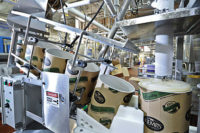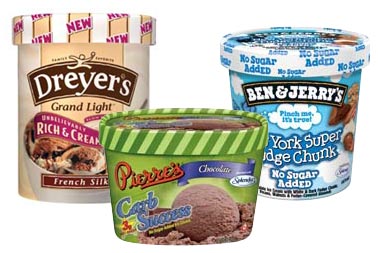
Those consumers who wait until the weather warms to visit the ice cream aisle will be in for a shock this summer. Sure there will be some new flavors, no big shakes with packaging, but low-carb and other better-for-you messages will greet ice cream shoppers like so many midway hawkers at a county fair.
A year ago there was a tremor of renewed interest in ice cream nutrition panels. SouthWest Foods' LeCarb may have been the only low-carb product in the stores at the time, but No-Sugar-Added and low fat roll-outs were cropping up. Now it seems the earth is shaking as just about every ice cream maker is rolling out a low-carb product, reinventing lowfat ice cream, expanding its no-sugar-added line, or rationalizing a strategy for sticking with the tried and true.
For instance, Blue Bell Creameries, Brenham, Texas, launches a three-flavor line of Crème de Carb products this month. Packaged in pints, these products contain just 4 grams (net) of carbohydrates per serving.
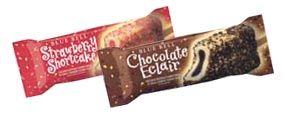
Pierre's French Ice Cream Co., Cleveland and Byrne Dairy, Syracuse, N.Y., are among numerous regional players gearing up low-carb products. Even Ben & Jerry's has gotten into the better-for-you game with four distinct offerings including low-carb, no-sugar-added and light ice cream.
But the sales chief at Brigham's Ice Cream, Arlington, Mass., plans to avoid what he says might soon be an oversaturated market.
"Our belief, and our customers confirm this, is that premium ice cream is a special treat, a dessert, an indulgence," says Lynn Spensley, director of sales. "When consumers make the decision to have this treat, they want something that is rich, creamy and satisfying."
One of the nation's top ice cream makers is bucking the low-carb trend and throwing a huge amount of resources into the light/lowfat subcategory.
Dreyer's Grand Ice Cream, Oakland, Calif., made big noise in January with the unveiling of a new proprietary technology claimed to make light ice cream taste like full-fat premium or superpremium.
The entire Dreyer's/Edy's Grand Light portfolio, which enjoys more market share than any other light ice cream brand, has been improved through a low-temperature freezing technology and will now be marketed as "Slow Churned" Dreyer's Grand Light. The company says it has spent more than three years developing the process and revamped at least one of its manufacturing facilities.
In what will be its biggest marketing effort ever, Dreyer's will work to convince consumers that light ice cream can taste great, and to equate "slow churned" with Grand Light just the way Miller Brewing Co. married the term "Cold Filtered" with its Miller Genuine Draft.
Meanwhile, there's a new player (sort of) in the Superpremium category, and if the folks at Lee's Ice Cream, Owings Mills, Md., are to be believed, they are ready to ascend to the top ranks of the category.
American consumers are giving more thought to their food choices than ever, which could mean there's a tough road ahead for what is arguably the least healthful category of dairy products. But as Breed noted, ice cream is all about having fun, and there's still plenty of fun to be had in 2004.
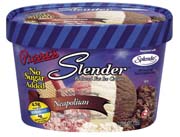
No comfort in the numbers
When the economy plunged before and after Sept. 11, 2001, a strange thing happened to ice cream sales. They grew faster than they had in prior years. The explanation was that consumers were staying home more and scrimping on big ticket items, but splurging on small things like comfort foods. Those comforting sales continued through 2002 before melting away in 2003.According to Informa- tion Resources Inc., sales in the overall ice cream category, including, sherbet and frozen novelties, were sailing along as recently as the first quarter of 2002. That period, ended March 31, 2002, saw 8.1% growth in sales measured by dollars and a 2.4% increase in unit sales. The growth slowed in the next three quarters, then, in the first quarter of 2003, sales began to retreat. For the last three quarters of 2003 sales were virtually flat or shrinking in terms of both dollars generated and units sold. For the year, sales were down 1.9% by dollars and 0.6% by units.
These numbers are for food stores, drug store and mass merchandisers not including Wal-Mart.
Looking at the individual sub-categories, frozen novelties continued to grow throughout 2003, with dollar sales up by more than 5.6% for the year.
For packaged ice cream, it's apparent that something needs to be done to spark activity in the ice cream aisle and processors are banking on better-for-you.
The novelty segment, on the other hand continues to grow. Dollar growth has been better than 5% throughout much of the past two years.
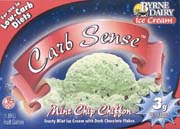
Staking a market claim
The landscape of the American ice cream business has changed dramatically in the past few years as large international food groups have bought into a market that had been dominated by traditional American-based companies both large and small. A big surprise this year from a business perspective is the emergence of what could become a new national competitor in the superpremium segment.Lee's Ice Cream began 25 years ago in Baltimore as a high-end parlor business, and grew into a favorite local indulgence while enjoying some business success. Soon after purchasing Lee's in 2002, father and son team Jacques and Steve Rubin found themselves planning to take Lee's to a much broader group of customers.
The Rubins are also the owners of Claudia's Kitchen, a gourmet cookie company that sells to the specialty foods industry. With the two businesses combined in one production facility, they created a unique niche opportunity in the superpremium segment.
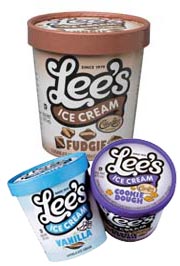
Initially, giving it a shot meant building a new facility for pint production and infiltrating the Mid-Atlantic market, but in the process, the Rubins were joined by two seasoned ice cream veterans.
Rick Brown and Jim Miller had once worked together at a little ice cream company in Vermont known as Ben & Jerry's. Brown is now Lee's v.p. and sales mgr. and Miller is in charge of production. The two held similar posts at Ben & Jerry's but left years ago. Miller had been retired, until the Rubins approached him about operating their new plant.
"We both met the Rubins and tasted the ice cream and we fell in love with it, and here we are," Brown says.
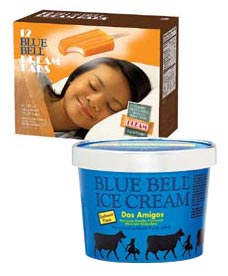
"When I realized Rick's abilities I thought ‘I'm going to push this as far as I can push it,'" he says.
Lee's has a regional distribution deal with a top national distributor and expected to be in 2,500 to 3,000 stores in the Mid-Atlantic by end of February. The company also has a deal with a multi-plant national co-packer that will allow for quick expansion.
"We have a very small immediate goal," Brown says. "We want to be the third-largest selling superpremium pint in the country."
Pints will be offered in a 14-flavor portfolio that's heavy on the baked inclusions, and there's not a single low-carb or lowfat flavor among them.
Long term? "The company has made a commitment to make Lee's Ice Cream the new best-selling superpremium ice cream and that's a long-term commitment," Brown says.
Lee's is not the only ice cream company competing for a bigger market in 2004.
Blue Bell, a company with a heritage dating back to 1907, has expanded into the Southeast in recent years, and last year it opened two new distribution centers in Orlando and Tampa, Fla. Blue Bell's 2004 offerings will include the company's familiar mix of top quality novelties, and innovative ethnic and regional flavors.
Among the new flavors are Key Lime Pie, aimed at the Florida market, Dos Amigos, a blend of chocolate and vanilla with a touch of cinnamon, and Cajeta Y Crema, which features a swirl of cajeta caramel made from goats milk.
Blue Bell is also working to push its products across sales channels. The company does a brisk novelty business in school lunchrooms, and is introducing multipacks of Dream Bars, Cookie Cones and Nutzo Cones as sort of an ice cream homework assignment.
"We're using the exact inner wrap with these products that we place on individual items sold in school and we've designed the carton to match," Breed says.
The Crème de Carb line will include Vanilla, Chocolate and Moo-llenium Crunch.
Ice cream fans in Florida are also enjoying a new import from the land of the Vikings. Valhalla Ice Cream is an American-marketed product based on an established Norwegian brand. It offers unique premium flavors like Try's Chocolate Marzipan and Odin's Wildberry. The marketer of Valhalla is working to establish distribution deals to bring the product to a wider market including the Midwest.
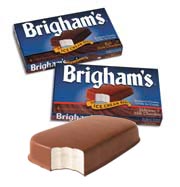
To carb or not to carb
That may be the question in 2004.A survey of ice cream manufacturers and a look at the new product introduction rosters of the past few months indicate that ice cream formulated for the low-carb dieters may be the single hottest trend of the year. And yet some companies are taking a different, or more holistic approach to the healthful ice cream conundrum.
Good Humor-Breyers, Green Bay, Wis., became the first major national company to introduce a line of low-carb products when it rolled out CarbSmart™ ice cream and novelties in September. This year it will double the flavors of the CarbSmart Breyer's ice cream line, with Mint Chocolate Chip, Rocky Road and Butter Pecan joining Chocolate, Vanilla and Strawberry. In the Klondike line, CarbSmart Ice Cream Sandwich and CarbSmart Fudge Bar join the original CarbSmart Ice Cream Bar.
Good Humor-Breyers expands its no-sugar-added novelty offerings as well, with Sugar Free Creamsicles, and a Sugar Free Healthy Bunch multipack that includes sugar free Fudgesicles, Creamsicles and Popsicles.
Rich and indulgent ice cream continues as a hot trend this year too, and a Klondike With Mini-Reeses Pieces® Sandwich will be added to Good Humor Breyers' impulse novelty offering.
Pierre's French Ice Cream, is introducing a product that demonstrates the opportunity for two product trends to intersect in Pierre's Carb Success™ No Sugar Added Ice Cream.
Laura Hindulak, director of marketing at Pierre's says the company's 2002 introduction of Pierre's Slender,™ a product with no sugar added and less fat, paved the way for Carb Success.
"Originally we came out with the reduced fat and it was met with wide acceptance from diabetics and people watching their waistlines," Hindulak says. "We thought with all the excitement about low-carb foods that if we came out with a new product that's lower in carbs we'd have a winner."
It may be a fine distinction, but Pierre's seems to be the only manufacturer using a no-sugar-added description for products marketed to both carb watchers and fat watchers. In its marketing literature, Pierre's refers to these consumers as "waist watchers."
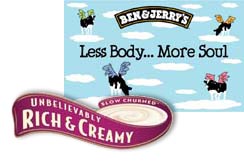
While it has not yet introduced a low-carb product, Dreyers, has also focused a lot of attention on the better-for-you segment. Dreyer's no-sugar-added line is now sweetened with Splenda. But the real news out of Oakland is in the light segment and a new process called Slow Churned.
"The whole idea was ‘how can we make light ice cream taste more like full fat," says Yulanda Young, marketing mgr. in Dreyer's better-for-you division. "That has continued to be the Holy Grail; really since we invented the category. We've been working on it pretty solidly for more than three years and we dedicated a lot of R&D resources to it."
The answer came not in the form of new ingredients or formula, but in a new process developed with an equipment manufacturer.
"It's a different way of mixing and blending," Young says. "It's slower and colder to maximize the fat that's in there. A good analogy is that it's kind of like kneading the fat molecules. You utilize the butter fat in a much more efficient way."
The result, Dreyer's says, is a richer mouthfeel that lingers on the tongue much longer than with most lowfat products. The company conducted a number of in-market tests and blind tasting panels and found that consumers agreed.
"We did a blind test with our Grand Light, which is already the No. 1 brand in the category," Young says. "We formed panels of ice cream consumers and asked them to eat it. When they had tasted it, we asked them to classify it, and nearly eight out of 10 put it in the category of a full fat or superpremium ice cream."
In an in-market test the new product, with new package and market support, experienced 79% growth, Young said.
"Repeat sales were up dramatically and we were pulling consumers over from full fat," she noted.
With those results in hand, Dreyer's will begin its most ambitious marketing campaign ever.
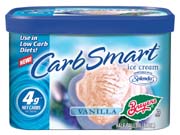
Dreyer's also markets the skinny cow brand of low fat ice cream and novelties, but those products are marketed specifically to the dieters, and Young sees the low-carb products in the same light. The Slow Churned Grand light, on the other hand, is for everyone.
"We think that with this product Mom will buy it for the whole family, and if she can give the kids something that's better for them that would be a win-win," Young says. "Until now she would probably buy the light for herself and the regular for the rest of the family."
While Dreyer's has no immediate plans to introduce a low-carb product, Young didn't rule it out for the future.
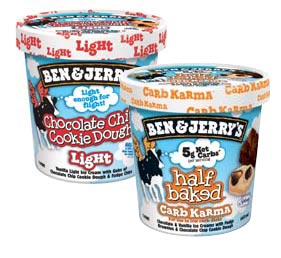
Sidebar: Ben & Jerry's Takes the Holistic Approach to Better-for-You
While it might be surprising that Ben & Jerry's is entering the better-for-you scrap, it's no surprise that it has done so with its trademark aplomb."Less body...more soul" is how the gurus of superpremium describe four new lines of products that have less bad stuff.
"A big part of the Ben & Jerry's philosophy is to address our fans' concerns. Offering no alternatives just isn't in keeping with what we're all about, so we created a new line of ice cream and frozen yogurt that has something for everyone," says Arnold Carbone, Ben & Jerry's Conductor of Bizarre & D. "Depending on what you're looking for, we've removed some of the sugar, carbs, fat or calories, but none of the taste."
Carb Karma Ice Cream
Ben & Jerry's says the new Carb Karma flavors are guaranteed to stimulate the mind, satisfy the belly and soothe the soul. With only two to five grams of net carbs per serving, Carb Karma Half Baked, Chocolate and Vanilla Swiss Almond are for use as part of a low-carb diet and will be nirvana for anyone watching their carb intake.
o Sugar Added Ice Cream
Ben & Jerry's says callers on its consumer hotline have been clamoring for a no-sugar-added flavor. The wait for a Ben & Jerry's no-sugar-added option is over. No Sugar Added Strawberry and New York Super Fudge Chunk are two extraordinary flavors, sweetened not with added sugar, but with Splenda.
Light Ice Cream
No cats are not mating with dogs, but Ben & Jerry's now has an option for those who fret over fat-grams. Ben & Jerry's Vanilla, Chocolate Chip Cookie Dough and Chocolate Mint & Cookies Light Ice Creams are loaded with great flavor but have 50% less fat and 25% fewer calories than the average super-premium ice cream.
Low-Fat Frozen Yogurt
All Ben & Jerry's frozen yogurt flavors are now "officially" low fat - containing 3 grams of fat or less per serving. Fans who have long enjoyed the legendary Half Baked Frozen Yogurt will be equally thrilled to celebrate its elevation to full-fledged Low-Fat Frozen Yogurt status. And Chocolate Fudge Brownie and Cherry Garcia Low-Fat Frozen Yogurt still deliver the same great taste, in a different package.
According to sources in South Burlington, Ben & Jerry's was speeding these products to market last month, but the official national roll out is slated for April.

Sidebar: Growing Up Tastefully
Brigham's Ice Cream celebrates 90th anniversaryNew Englanders scream for it - premium Brigham's ice cream, that is. This year, the Arlington, Mass., company celebrates its 90th birthday, reflecting on a rich, flavorful legacy of producing and marketing high quality dessert products to loyal consumers for nearly a century. Generation after generation, New Englanders continue to pass along the great-tasting tradition of Brigham's ice cream.
The Brigham's story began in 1914 in the brothers Symmes' Post Office Square basement facility where Boston's finest candy and ice cream was produced under the Durand Company name. Ten years later across town in Newton Highlands, Edward L. Brigham began a successful ice cream business. Brigham became a neighborhood hero, making ice cream and candies from closely-guarded recipes in the back room of his store. He served his five-and-ten cent cones and twenty-cent sundaes in such generous portions that people flocked to the store from miles around, requiring extra police officers to handle weekend crowds. With an eye on expansion, the Durand Company and Brigham's made the decision to merge, maintaining the Brigham's name, along with the commitment to making the best tasting ice cream around.
Soon, more than 25 Brigham's restaurants and ice cream parlors opened throughout the region. Responding to growing consumer demands in the early 1980s, Brigham's introduced quarts of its preferred premium ice cream in supermarkets. Today the brand enjoys distribution in every major supermarket in New England.
In 1993, as a growing market for non-fat ice cream and yogurt emerged, Brigham's purchased

Sidebar: Authentic Gelato at Retail
Typically made fresh in a gelateria, now authentic gelato can be purchased packaged at retailDonna Berry, Product Development Editor
Gelato [jeh-LAH-toh], the Italian word for ice cream, varies significantly by region in Italy. In the south, particularly in Sicily, gelato is made with milk and no egg yolks, and sometimes includes a thickener such as cornstarch. In central Italy, such as in Tuscany, it is made from a milk and egg custard, while up north, it is very rich, as northern Italians use cream and eggs to make their gelato. The one attribute that all the gelatos have in common is the use of little or no overrun, the air that is whipped into traditional American ice creams to give it a lighter texture. As a result, gelato
is denser than traditional American ice cream, and this density produces a more heightened flavor for the consumer.
Another attribute of gelato is that it is made fresh at a gelateria and typically held and served at a warmer temperature than American-style ice cream. This further intensifies the flavor. When gelato is purchased for at home consumption, it is hand-packed at a gelateria.

Aromi d'Italia to the rescue! Aromi d'Italia, Glen Burnie, Md., is a distributor of gelato and other Italian products. The company has partnered with Pecan Deluxe Candy Co., Dallas, to bring authentic-looking and tasting gelato to U.S. grocery stores. The companies worked together to modify a traditional gelato mix so that it runs on current ice cream filling equipment. Ice cream manufacturers simply fill containers, preferably clear ones so that consumers can view the delicious contents, and top the gelato with indulgent inclusions.

Other indulgent flavor combinations include Flambe della Banana, which is banana gelato topped with pound cake and cognac candy pieces drizzled with banana flambé sauce. Romantico di Bosco is wildberry gelato topped with mixed berry cobbler bark drizzled with raspberry chocolate sauce. And of course, what would an Italian ice cream line be without a Tiramisu? The tiramisu gelato from Aromi d'Italia and Pecan Deluxe is a tiramisu gelato topped with Marsala-flavored ladyfinger cookies and chocolate flakes drizzled with coffee sauce.
For more information on this gelato program, call 800/733-3589.
